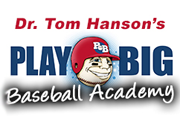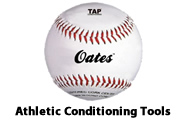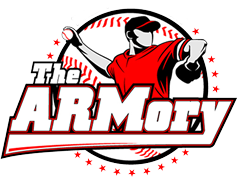What Caused My Son’s Injury? Questions From a Loving Father
I recently received a very interesting e-mail from the devoted father of a young pitcher here in Florida. He was referred to me by, Kyle Boddy, of Driveline Baseball in Seattle, Washington. Kyle is a very bright and progressive thinking pitching instructor. His ideas are always intriguing, and while we don’t always agree on everything, our approaches are at least in the same ballpark.
The father’s email (which he also sent to Kyle) was long, thorough, well-conceived and asked many important questions. With his permission I will share it with you. I have trimmed it down a little, and I have changed the names to protect their identities.
Here is the Email. My response will follow.
Hi Randy,
My son Thomas is a 6-1″ 185 lb. LHP who, prior to this fall, relied more on his changeup than his fastball. This past summer Thomas played with a local 16U travel ball team and pitched very well in each of the tournaments he attended. Thomas quickly became frustrated with the Perfect Game scout blogs/assessments when, despite throwing a one-hitter and a three-hitter in back-to-back tournaments, wasn’t “written up” due to his lack of velocity (topping out at 77 MPH at the East Cobb tournament in July). I didn’t think that was too bad considering he was younger than the vast majority of the players and was named to one of the All-Tournament teams; but, Thomas wanted to learn how to throw harder.
We made a decision in late July to attend a private pitching camp offered by a baseball pitching specialist based in Louisiana. The camp’s primary focus is velocity and taught us many previously unexplained technical aspects of pitching mechanics that are critical in high-velocity pitchers. The program consists namely of throwing exercises from different stationary positions with a 20 ounce medicine ball and regular-sized baseball. These drills are designed to create torque and linear power while also teaching hip/shoulder separation.
Thomas’s goal was to focus on betting bigger, stronger and using his newly found knowledge of pitching mechanics to increase his velocity. Increased velocity would exponentially increase his chances of securing a roster spot on a highly sought-after travel team which conducts tryouts in December. In order to attain his goal, Thomas elected to skip “fall ball” and instead followed the pitching program religiously. We both assumed that “resting” his arm during the off-season by not playing competitively and focusing on getting in better shape was a brilliant idea.
Thomas focused exclusively on the program’s throwing drills and lifting program from August through the first week of December. Because Thomas had never lifted before and is extremely inflexible, it took him several weeks before he could get in proper position to perform many of the Olympic-style lifts that were part of this program. It is fair to say that the lifting part of the program lagged behind the throwing part of the program due to his inexperience with weights and inflexibility. Thomas was an advanced thrower but a novice weight lifter.
Just prior to Thanksgiving, Thomas started to pitch a weekly bullpen or two and attended a few throwing sessions with his long-time, local pitching coach to prepare for the tryouts. Thomas was excited as he noticed a significant increase in his velocity – he was hitting the low 80s according the coach. We assumed the velocity gains were attributable to his physical maturity – Thomas grew two inches since attending the pithing camp – and Thomas’s adherence to the program.
Thomas showed up at the tryout filled with confidence that his newly found velocity gains would give him the edge he needed to make the team. There were a couple hundred kids trying out in front of many local coaches and a dozen or so college scouts. Thomas pitched very well in his one inning of work; however, later that evening, Thomas experienced a sudden sharp pain in his elbow while clapping in front of the television. We were very surprised and consulted with several doctors once we realized the pain was still lingering following ice treatment. Thomas was ultimately diagnosed with a minor UCL injury (the doctor said it was a “2” on a scale of “1 – 10” with a “10” being TJ surgery). Thomas is currently in physical therapy and hasn’t thrown since early December. (BTW… ironically, he made the team).
My concern isn’t that Thomas will miss a major part of his sophomore year (Thomas is disappointed, however) or that his high school varsity coach is now upset because his ace is unavailable. My concern is why or how did this injury occur and how can we prevent it from happening again? We thought we were doing the right thing. As you might suspect, everybody I come in contact with – doctors, therapists, coaches, concerned parents, Internet Experts, etc. – has a different opinion on the cause of his injury. I’m only interested in the “truth” so that Thomas can prevent this from happening again.
Below are some of the theories advanced with respect to Thomas’s injury and I’d appreciate your input:
1. Overuse of Arm –
2. Too Many Curve Balls/Sliders –
3. Lack of Physical Maturity –
4. Poor Mechanics –
I contacted the founder of the velocity program my son was following and asked him to look at my son’s mechanics from the velocity camp in July. The first thing the instructor advised was that studies show that kids who participate in tryouts are more prone to arm injury. He then reviewed the video again and looked at my son’s mechanics. The only issue he could see is that Thomas does not finish forward and is very rotational with his trunk, which studies link to excessive torque in the elbow. But, the instructor doesn’t think Thomas’s mechanics caused the injury. What he believes happened is that Thomas is throwing harder because of this leg and core power increases from the exercises but he is not strengthening his arm enough to protect the joints. His advice to Thomas is to simply get stronger in the forearm and perform joint integrity training to make sure the joints are strong enough to protect the load on the elbow. This seems to indicate that there is nothing wrong with Thomas’s mechanics and is a question of preventive strength.
With that said, there is something about his current routine that has us second-guessing his injury. I recognize that a flawed pitching delivery or flawed workout program will microscopically tear the UCL and over time result in a significant tear or ruptured UCL. We don’t want that to happen.
We would like your opinion on what to do next. What do you think likely caused his injury? How effective is the remote training? Is it safe? How do I ensure that he is doing the drills correctly?
We look forward to your response and thanks in advance for your help.
Warm regards,
Joey M.
Here is my response
Hi Joey,
I was able to watch your video analysis. I have studied the program you referenced a little and while our styles are certainly different, I do agree with some of what the founder of your current program is saying in the video.
The one major difference is see is that in our program, WE START WITH THE PAIN (I borrowed that phrase from my mentor and friend Ron Wolforth at The Texas Baseball Ranch).
As you may know, in addition to being a pitching instructor, I have been a Physical Therapist in private practice for the past 21 years, so I am always on the alert for contributors to pain.
Brent Strom, the Major League Pitching Coach for the Houston Astros came up with this brilliant idea: “Survival always trumps performance.” So if you are in pain, your body will not allow you to improve. And if you add energy to a bad movement pattern or on top of an existing physical constraint, you are at risk for injury.
Let me be clear.
No one can guarantee total injury prevention. The only safe pitch count is zero. But if you’re going to try to advance in ability, you need to identify as many of the risk factors as you can and try to suppress them as much as possible.
To answer your question about what “caused” Thomas’s injury, I would say, “There are probably a lot of answers”. I don’t say that to dodge the question, but the fact is that there are no “causes” to injury, but there are always a multitude of contributing factors. Injuries are usually the result of a confluence of contributing forces—some mechanical (the way you throw), some physical (your body’s specific constraints), and then there are other factors such as workload, preparation, ramp up, warm up, life history, history of prior injuries, genetic makeup, and other psychological components.
So let’s follow our fundamental tenet and START WITH THE PAIN.
Thomas’s pain is in the medial elbow.
Now let’s begin with the mechanical factors. I have a video series called Mechanical Contributors to Arm Pain that covers this is detail.
While there are many factors suspected to add increased torque to the UCL, three have been specifically indicted in a study in The American Journal Of Sports Medicine. They are: 1) Side arm throwing, 2) torso rotation that occurs prior to the front foot hitting the ground, 3) Forearm flyout—when the angle between the forearm and the humerus exceeds 90 degrees at moment the front foot is weight bearing (we call this moment “final connection”). Factors that increase torque on the UCL could often, but not always, predispose and athlete to injury.
When looking at the video you sent, Thomas appears to display the last 2.
So what mechanical factors can contribute increased torque on the UCL and lead to medial elbow pain?
There are 7 that I can think of, and they all can make you late to final connection, causing forearm flyout, or they can cause early torso rotation.
(Note: Here I listed the 7 mechanical contributors to medial elbow pain…Check out Mechanical Contributors to Arm Pain for a detailed explanation)
But the problems aren’t always totally mechanical. There are quite a few physical constraints that can contribute to medial elbow pain as well. My video series called Physical Contributors to Arm Pain covers these variables. I am releasing part 3 of this series (which coincidentally is all about medial elbow pain) to my Mobile VIP members later this week.
Here is a short list of the physical contributors to medial elbow pain.
(And here I listed 8 physical contributors to medial elbow pain. Become a Mobile VIP and you can see them for free)
Obviously, without examining Thomas physically, I am unable to comment on the specific physical constraints that might have contributed to his injury.
Understanding that I would be very limited in my outreach if I had to personally examine every pitcher that needed advice, I wrote Engineering The Superhuman Pitching Machine Vol 2: Conducting a World Class Pitcher Assessment. In this book and video I created a layman’s guide to conducting a thorough pitcher assessment. You don’t need a medical degree, but in my opinion, if you even attempt to engage in a velocity-enhancement training program that doesn’t include a thorough head-to-toe assessment of all the known possible mechanical and physical constraints, then you are playing with a loaded gun.
I also can’t comment specifically on any workload, preparation, warm-up, or ramp up to volume, historical, or psychological variables that may exist.
So you see, developing pitching ability—especially velocity enhancement– is an extremely complicated endeavor. You can’t cookie cut it but you must have a system. My knowledge and the application of the concepts I have learned is constantly expanding and evolving. After over 21 years of coaching and practicing physical therapy, I am finally able to take that complexity, organize it, and present in an easy to understand format.
“Simplicity on the far side of complexity.”
Hopefully this response has helped you a little. My feeling is that I might have given you more questions than answers.
I am here to help you in any way I can. Hopefully you can bring Thomas up to Tampa sometime soon. A great opportunity would be for you guys to attend one of our 2 day Rocket Launchers Training Camps. We are holding 3 in March (March 8/9, March 15/16, and March 29/30). During the camp we will conduct a head-to-toe assessment, a video analysis, and we’ll offer 6-7 hours of multimedia presentation revealing the motor learning science behind everything we do. We’ll introduce you and Thomas to all the corrective drills and exercises we use to address the constraints we find in the assessment and you’ll leave with a written 21 day plan for making the necessary changes and getting back to pain free progression. You’ll also be exposed to our world-class mindset training throughout. I understand that most folks don’t want to do a huge amount of throwing on the weekend during the high school season, so I have designed the program to allow each athlete to actually throw only to the extent that he feels is appropriate. This weekend camp would be a great way for me to give you some hands-on help.
I want to thank you for reaching out to me. I think your situation is very similar to that of millions of parents and pitchers out there. With your permission, I‘d like to share this with my list of contacts. I think there are lots of people that we could help by sharing your story.
Randy
My Kind of Dad
I have never met Joey, but I hope to see him and Thomas very soon. Clearly, like me, he is the kind of Dad willing to go anywhere, do anything to help his son achieve his dreams.
I would be honored to be given the opportunity to help them both.
Until Next Time
Start with the pain,










Leave a Reply